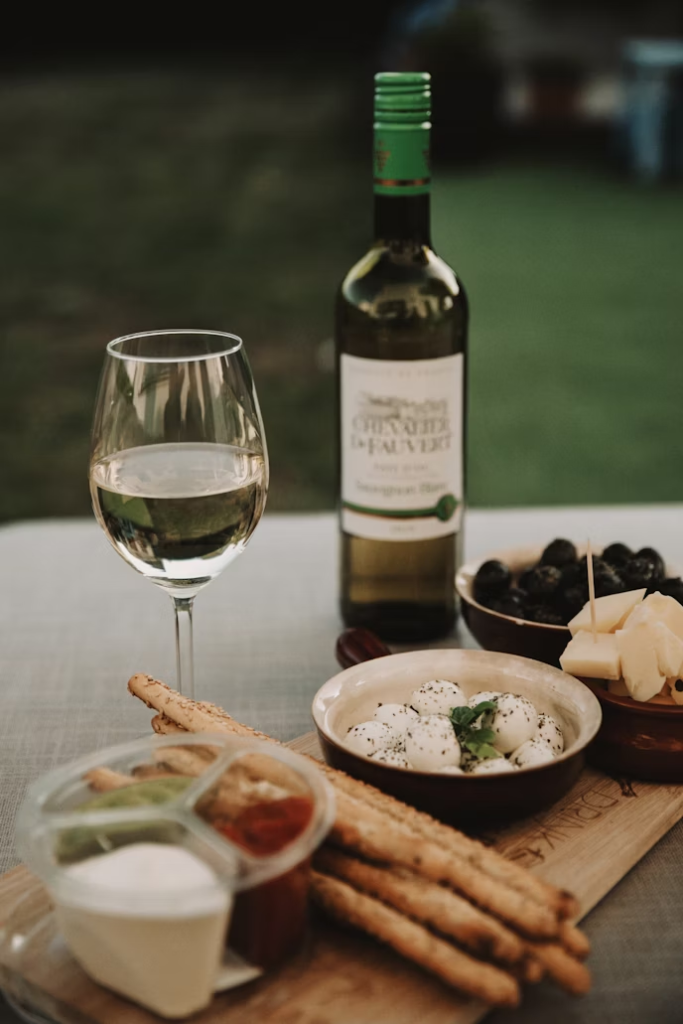Wine and food pairing is an art that has been appreciated for centuries, transforming meals into memorable experiences. When done right, wine can enhance the flavours of food, creating a harmonious balance that heightens both the dish and the drink.
However, pairing wine with food isn’t just about choosing a red with a steak or a white with seafood. There are several factors to consider in order to achieve the perfect balance.

This guide will walk you through the essentials of wine and food pairing, helping you master the art of matching wine with the ideal food choices. Read More Here to further understand the intricacies of wine pairing.
Why Wine and Food Pairing Matters
The goal of pairing wine with food is to complement the flavours and textures of both. When chosen correctly, the wine will enhance the taste of the food, and the food will bring out the best qualities in the wine.
A good pairing elevates the dining experience by balancing acidity, sweetness, bitterness, and tannins, creating a harmonious flavour profile.
How Wine Affects the Flavour of Food
Wine has a wide range of flavours, aromas, and textures that can impact the way we experience food. The right wine can highlight subtle notes in a dish, while a poor pairing can overpower or dull the flavours of both the wine and the food.
By understanding the basic principles of pairing, you can enhance your meal and wine-drinking experience.
Basic Principles of Wine Pairing
While there are no strict rules in wine and food pairing, some general guidelines can help you make better choices. Below are some of the key factors to consider when selecting the right wine for your dish.
1. Matching Wine Body with Food Weight
The weight of the wine (light, medium, or full-bodied) should match the weight of the food. A light-bodied wine pairs well with delicate dishes, while a full-bodied wine complements richer, heavier meals.
Examples:
- Light-bodied wines like Sauvignon Blanc or Pinot Grigio go well with light dishes such as salads, seafood, or chicken.
- Full-bodied wines like Cabernet Sauvignon or Shiraz are ideal with hearty dishes like steak, lamb, or barbecue.
2. Balancing Acidity with Acidity
Acidic wines, such as Sauvignon Blanc, have a refreshing crispness that works well with food that has a high acidity, like tomatoes or citrus-based dishes. The acidity in the wine balances the acidity in the food, preventing the dish from tasting too rich or heavy.
Examples:
- Tomato-based dishes such as pasta with marinara sauce or pizza pair well with a high-acid red wine like Sangiovese.
- Seafood with citrus pairs perfectly with crisp white wines like Pinot Grigio or Albariño.
3. Pairing Wine Sweetness with Food Sweetness
Sweet wines like Riesling or Moscato complement sweet dishes or desserts. The sweetness of the wine balances the sugar in the food, creating a harmonious pairing that isn’t overly sweet.
Examples:
- Spicy dishes like Thai or Indian cuisine work well with sweet wines such as off-dry Riesling or Gewürztraminer to counterbalance the heat.
- Chocolate desserts can be paired with a rich, sweet red wine like Port or a sweet white wine like Muscat.
4. Contrasting Flavours
Sometimes, contrasting flavours can work better than complementary ones. A wine with high acidity can cut through the richness of a fatty dish, while a tannic red wine can balance the fat in a steak.
This type of pairing creates an interesting contrast that enhances both the food and the wine.
Examples:
- Fatty meats like duck or pork belly pair well with wines that have higher acidity or tannins, like Pinot Noir or Zinfandel.
- Cheese: A sharp, salty cheese such as blue cheese can be paired with a sweet wine like Sauternes to create a delightful contrast.
Best Wine Pairings for Common Foods
When in doubt, certain food and wine combinations are timeless classics. Here are some of the best wine pairings for popular dishes:
1. Red Wine Pairings
Red wines are often rich and tannic, making them ideal for dishes with robust flavours.
A. Steak
Steak, particularly a grilled or charred cut, benefits from the tannins in full-bodied red wines like Cabernet Sauvignon or Shiraz. The tannins help cut through the fat in the meat, while the wine’s dark fruit and spice notes enhance the flavour of the steak.
B. Pasta with Red Sauce
Pasta dishes with tomato-based sauces work well with wines that have good acidity to match the tangy, savoury flavours of the sauce. A classic pairing is Chianti, a wine made from the Sangiovese grape, which has high acidity and pairs wonderfully with tomatoes.
2. White Wine Pairings
White wines are typically lighter and more refreshing, making them a great match for lighter fare.
A. Seafood
Seafood and white wine are often a match made in heaven. Light, crisp white wines like Sauvignon Blanc or Chardonnay are perfect for dishes like oysters, crab, or fish. The acidity of the wine cuts through the richness of the seafood, providing a refreshing contrast.
B. Chicken
Chicken, especially when cooked with herbs or light sauces, pairs wonderfully with white wines such as Pinot Grigio, Chardonnay, or even a slightly sweet Riesling. The lightness of the wine complements the mild flavours of chicken without overpowering them.
3. Rosé Wine Pairings
Rosé wines are versatile and can be enjoyed with a variety of dishes. Their balance of fruity and floral notes makes them an excellent middle ground between red and white wines.
A. Salads
Salads, especially those with fresh vegetables, goat cheese, or light dressings, pair perfectly with a dry rosé. The wine’s acidity complements the freshness of the ingredients, making for a light, refreshing pairing.
B. Grilled Vegetables
Grilled vegetables, especially those with smoky or charred flavours, go well with rosé wines, which have enough body to stand up to the vegetables’ intensity without overwhelming them.
4. Sparkling Wine Pairings
Sparkling wines like Champagne or Prosecco are more than just celebratory drinks—they’re incredibly food-friendly.
A. Fried Food
Fried foods, like tempura, fried chicken, or crispy potatoes, pair perfectly with sparkling wine. The bubbles in the wine help cleanse the palate, while the acidity of the wine cuts through the richness of the fried food.
B. Soft Cheese
Soft cheeses such as Brie, Camembert, or goat cheese pair well with sparkling wine. The creamy texture of the cheese is balanced by the crisp acidity and bubbles of the wine, creating a delightful contrast.
Tips for Pairing Wine with Food
While there are plenty of general guidelines, there are also a few tips that can help you master wine pairing:
1. Trust Your Palate
Ultimately, the best way to pair wine with food is by trusting your own taste buds. Everyone’s palate is different, and personal preferences play a huge role in what makes a great pairing. Don’t be afraid to experiment and find what works best for you.
2. Use Regional Pairing
Often, wines from a particular region are a great match with the local cuisine. For example, Italian wines such as Chianti or Barolo pair wonderfully with Italian dishes like pasta and pizza. Similarly, French wines like Burgundy complement French cuisine beautifully.
3. Consider Texture
Pairing the texture of food with the texture of wine is just as important as matching flavours. A wine with high tannins, like Cabernet Sauvignon, can cut through the fattiness of a steak, while a wine with a creamy mouthfeel, like Chardonnay, can complement the texture of a creamy pasta dish.
Conclusion
Pairing wine with food is both an art and a science. By understanding the basic principles, such as balancing acidity and matching the weight of the food and wine, you can enhance your dining experiences.
Whether you’re enjoying a casual meal or preparing a gourmet feast, the right wine pairing can transform a good dish into a great one. With practice and experimentation, you’ll gain the confidence to create perfect pairings every time.
Frequently Asked Questions
Can I pair red wine with seafood?
Yes, certain red wines, like Pinot Noir, can pair well with seafood, especially when prepared with earthy or savoury sauces. However, lighter white wines like Sauvignon Blanc are generally a better choice for most seafood dishes.
What is the best wine to pair with spicy food?
Sweet wines like Riesling, Gewürztraminer, or Moscato are excellent choices for pairing with spicy dishes. The sweetness in the wine helps balance the heat from the food.
Should I serve wine at room temperature or chilled?
It depends on the type of wine. Red wines are typically served at room temperature (around 18°C), while white wines and rosé wines are best served chilled (around 10-12°C). Sparkling wines should be served well chilled.
